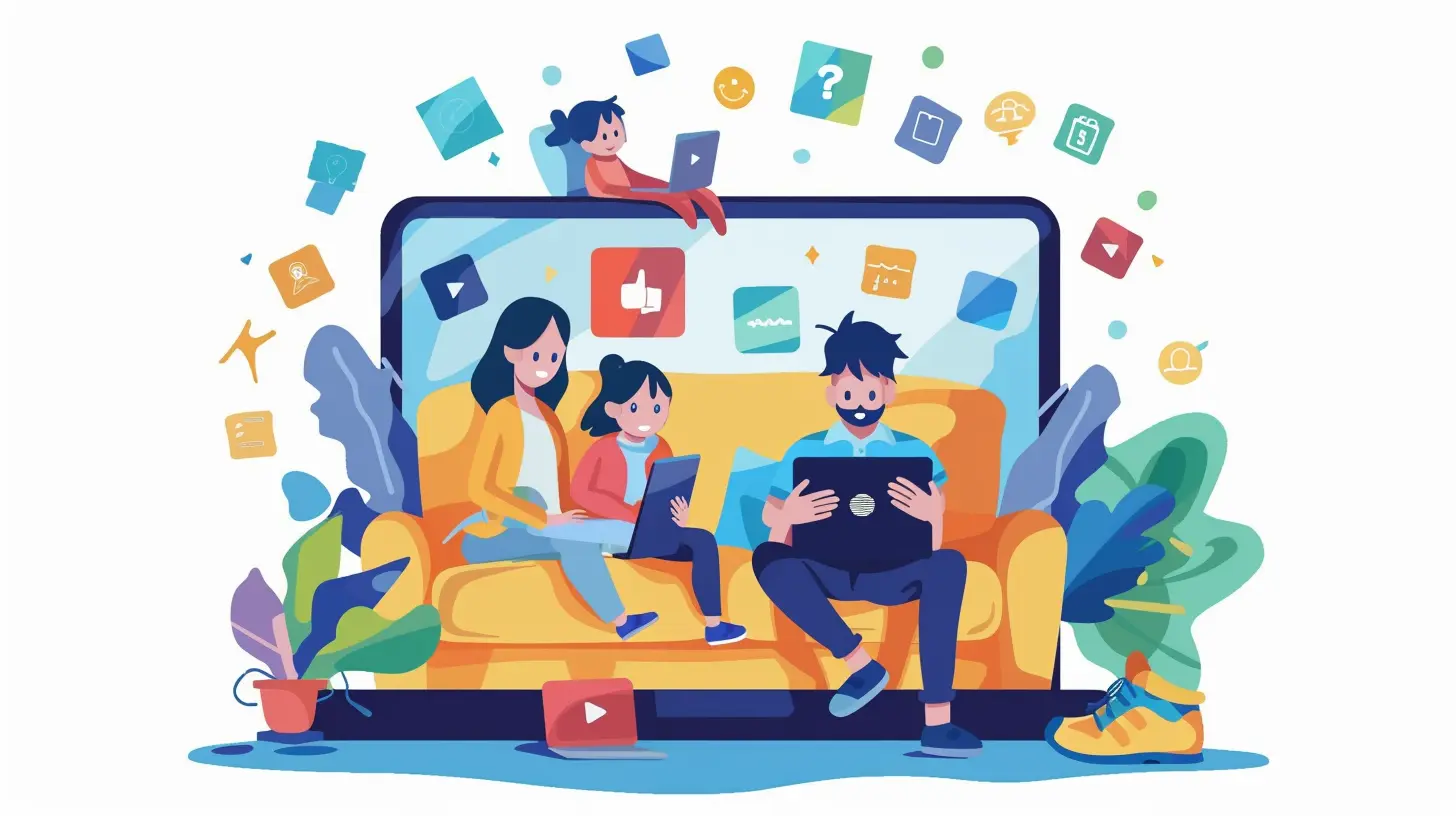Using Technology to Monitor Your Child’s Mental Health: The Dos and Don’ts
28 August 2025
Keeping up with your child’s emotional ups and downs can feel like trying to track a squirrel with a jetpack. Parenting is tough enough as it is, and when mental health enters the picture, the worry multiplies like laundry on a Sunday night.
Thankfully, we're living in an age where technology isn't just for memes and cat videos. It can actually help us keep tabs on our children’s mental well-being. But here’s the kicker: just because tech exists doesn’t mean we should go full surveillance-mode like a spy thriller.
So, how do you strike that sweet balance between supporting your child and not making them feel like they’re on an episode of Big Brother?
Let’s dive into the dos and don’ts of using technology to monitor your child’s mental health — without losing their trust or your sanity.
📱 The Tech-Savvy Parent: Why Use Technology in the First Place?
Before we start policing screen time or downloading apps like there’s no tomorrow, let’s talk about why you’d even want to use tech in this space.Mental health issues in kids and teens are on the rise. We’re talking anxiety, depression, burnout from school, and let’s not forget the social media comparison game — it’s real and rough. Technology can:
- Provide clues to mood changes
- Help track behavioral patterns
- Offer resources like meditation or therapy apps
- Alert parents to potentially dangerous situations (think cyberbullying or self-harm)
Sounds good, right? But here’s the catch: it must be done with respect, communication, and boundaries. So let’s break this thing down.
✅ The Dos of Using Tech to Monitor Mental Health
1. Have the Talk Before You Tech
First and foremost, don’t go zero to ninja on your child without a heads-up. It’s tempting to install a hidden app and just “peek in,” but trust is everything.Talk to them about your concerns. Let them know it’s about care, not control. Keep it open, collaborative, and age-appropriate.
> Think of it like giving them floaties before they jump in the pool — you’re offering support, not dragging them back to shore.
2. Use Tech as a Tool, Not a Telescope
Yes, you want insight. No, you don’t need a front-row seat to every single emoji they send. Use technology to assist, not obsess.You could start with apps that encourage self-check-ins or journaling — some even offer mood trackers. A few popular ones include:
- Moodpath
- Calm
- Woebot
- Headspace for Kids
- Daylio
These kinds of apps help your child build emotional awareness and let you spot patterns over time.
3. Stick to Apps with Parental Features (That Actually Work)
There are some great parental control apps out there — Bark, Qustodio, FamilyTime, etc. — that keep an eye out for things like suicidal ideation or bullying language in texts or social media. If something alarming pops up, you'll get notified.But remember: these aren’t meant to catch your kid doing wrong; they’re meant to signal when help is needed.
Pro Tip: Avoid apps that feel like you’re hacking into their diary. Respect breeds communication; sneakiness breeds resistance.
4. Educate Yourself on the Platforms They Use
If your child’s life is happening on TikTok and Snapchat, but you’re stuck in Facebook land, we’ve got a problem.Tech-savvy doesn’t mean just downloading apps but understanding the online space your child is navigating. Follow a few parenting influencers, read app reviews, and yes, be that parent who asks what a “Snap Score” is.
When you know the terrain, you can guide, not just guard.
5. Encourage Digital Balance, Not Just Limits
Mental wellness also comes from knowing when to unplug. Use tools like Screen Time or Google Family Link to monitor how often they’re using devices — but instead of scolding, use it as a conversation starter.“Hey, I noticed you were online a lot yesterday. Everything okay?”
You’re not a warden. You’re a wellness coach.
❌ The Don’ts of Using Tech to Monitor Mental Health
1. Don’t Be a Digital Helicopter Parent
Being involved is great. Being overly intrusive? Not so much. Constantly checking messages, combing through browser history, or commenting on every post they make will just push them away.Would you want your boss reading every Slack message? Thought not.
Instead, aim for gentle oversight — like a lighthouse, not a searchlight.
2. Don’t Ignore the Analog Signs
Tech is great, but it’s not a substitute for face-to-face time. Mood shifts, social withdrawal, or even a change in sleep or eating habits are still your first clues that something might be off.Keep tech as your sidekick, but your real superpower is still that parent instinct.
3. Don’t Rely Solely on Automated Alerts
Yes, apps can raise red flags — but not all red flags mean the same thing. A dramatic meme might trigger a suicide alert, or a venting text might get misunderstood.Take notifications seriously, but follow up with a conversation. Ask, don’t assume.
4. Don’t Use Apps to Discipline Mental Health
Let’s make something crystal clear: mental health is not misconduct. Using technology to punish a child for feeling anxious, depressed, or overwhelmed is a hard no.If your child is struggling, support first, discipline later (if ever). Imagine shaming someone with a fever — you wouldn’t, right? Same goes here.
5. Don’t Skip Professional Help When It’s Needed
Apps can monitor, alert, and even soothe — but they are not therapists.If your child shows ongoing symptoms like:
- Persistent sadness
- Major behavioral changes
- Talk of self-harm
- Loss of interest in things they once loved
Please, contact a mental health professional. Think of tech as a thermometer — it can show something’s wrong, but it can’t do the healing.
🧠 What Does Healthy Tech Monitoring Look Like?
Let’s paint a picture here.You sit down with your teen and say, “Hey, the world’s kinda crazy right now. I want to make sure you’re doing okay. Would you be open to trying an app that lets you track how you’re feeling every day — just for you, but we can talk about any patterns we notice together?”
Boom. You’re not invading; you’re inviting.
They’re more likely to engage because you’re treating them like a partner, not a project. You’ve opened the door, not installed a hidden camera.
🛠️ Suggested Tools and Apps to Try
Here are some tech tools that support — not snoop:For Kids and Teens:
- MindDoc – Mood journaling, therapy support- Calm – Guided meditation and sleep stories
- Youper – AI-based emotional tracking
- Moodnotes – Helps identify distorted thinking
- Happify – Fun games aimed at reducing stress
For Parents:
- Bark – Monitors texts, emails, and social media- Qustodio – Tracks screen time and app usage
- OurPact – Screen time management and app control
- FamilyTime – Safety alerts and location tracking
- Circle Home Plus – Family-focused internet filter
Keep in mind: These aren’t one-size-fits-all. Do a little “tech dating” to find the right match for your family.
👨👩👧👦 Building a Culture of Communication
At the heart of all this tech is something that doesn’t need WiFi: connection.Use technology as a mirror, not a microscope. Let it reflect the emotional highs and lows, but don’t zoom so far in that you lose sight of the bigger picture.
Check in regularly, ask open-ended questions, and listen without fixing — sometimes just being that safe space is the best thing you can offer.
Remember, you’re not raising a robot, so don’t act like one. Emotions are messy, beautiful, chaotic, and very, very human. Use technology to help your child understand their mind, not fear it.
☀️ Final Thoughts: A Balanced Approach to Tech and Mental Health
Monitoring your child’s mental health isn’t about catching them doing something wrong — it’s about supporting them when they don’t have the words to ask for help.Tech can be a powerful ally, but only if used with empathy, openness, and trust. It’s the digital hug that reminds them they’re not alone — but only if your arms are wide open, too.
So, go ahead and embrace the tech — just don’t forget to look up from the screen and see the amazing, evolving human right in front of you.
You've got this.
all images in this post were generated using AI tools
Category:
Tech And KidsAuthor:

Steven McLain
Discussion
rate this article
1 comments
Fiona Spencer
While technology can be a helpful ally in monitoring mental health, remember: it’s a tool, not a crutch. Balance screen time with genuine connection. The real insights come from open conversations, not just data. Don't let gadgets replace the human touch that kids truly need.
September 8, 2025 at 4:13 AM

Steven McLain
Absolutely! Technology should enhance, not replace, meaningful interactions. Balancing screen time with real conversations is key to supporting your child's mental health.


